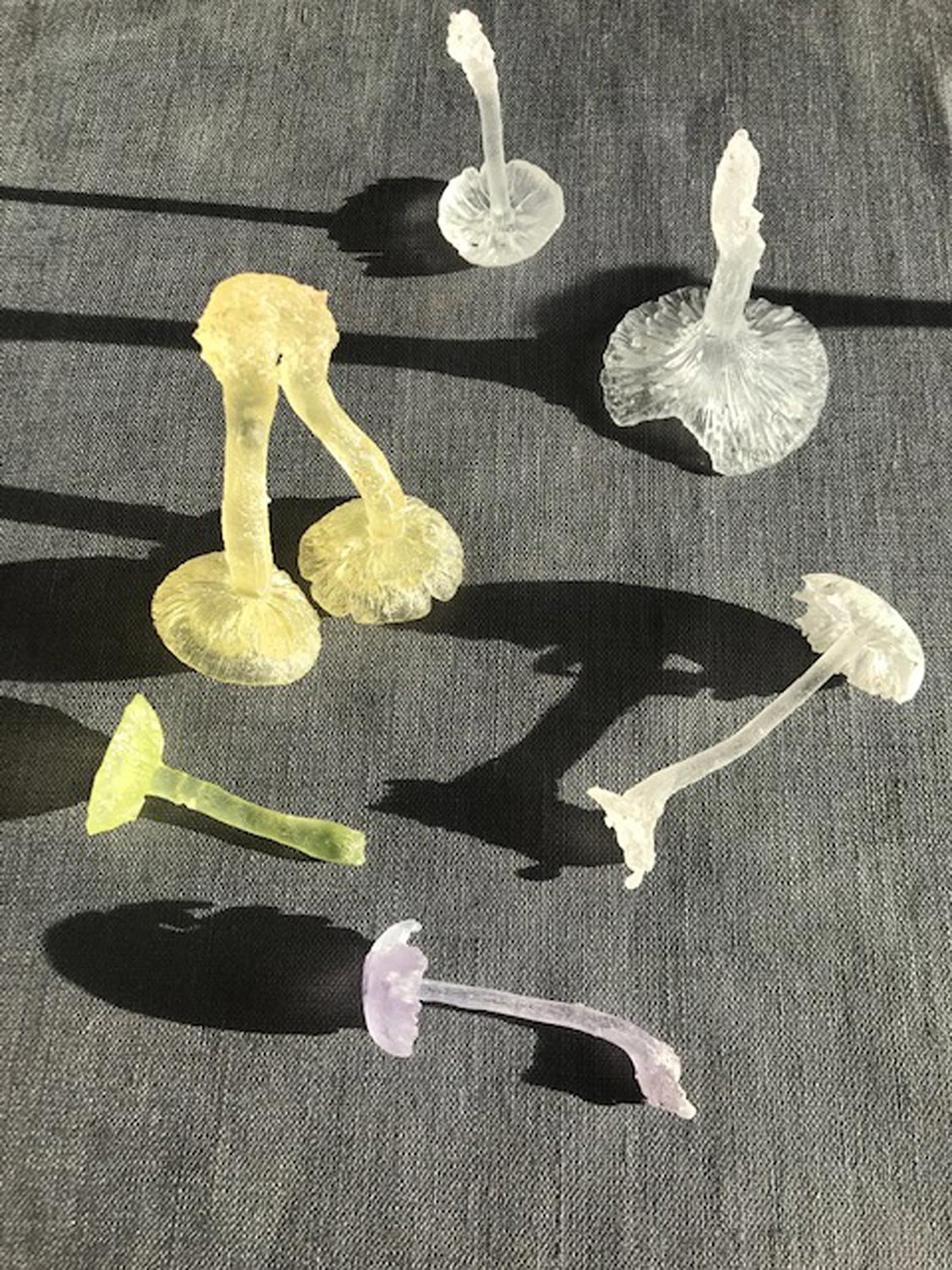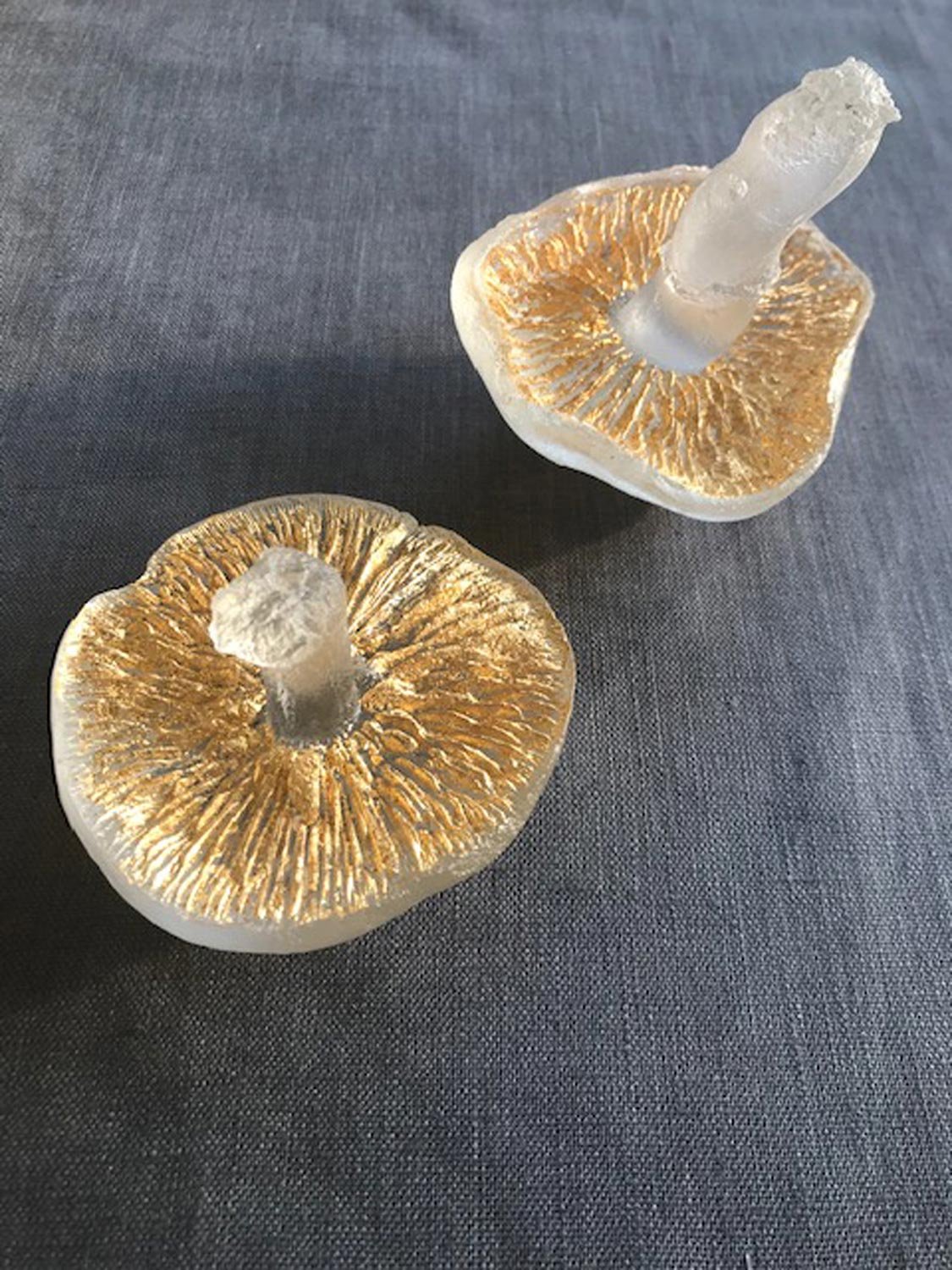Beatrix Potter: Naturalist & Artist
Like Queen Anne in the film the ‘Favourite’ I once had 17 rabbits.
Flopsy was the first and cost me two week’s pocket money.
My interest in Beatrix Potter began with my mother’s copy of the ‘Tale of Miss Moppet’. It contained a multitude of blank pages, which I exuberantly crayoned on.
From these unlikely beginnings I never expected to have a joint show with her at the Armitt Museum in the Lake District. But making work through a time of restriction (like Potter’s childhood) I developed an insatiable curiosity for the world around me (all those lockdown walks). My work quietly evolved and I collected only things that delighted me. And this is where our interest overlapped. Not rabbits but …
Fungi.
Beatrix Potter lived her life through three very different phases. Her intense interest in mushrooms could be described as the first one, long before the creation of Peter Rabbit. Her interest developed into full-scale scientific research. She bequeathed her mycological, natural history and archeological drawings to the Armitt Museum in 1943. They have toured nationally and internationally and they continue to inspire people today. A selection are currently on display at the V&A in ‘Beatrix Potter: Drawn to Nature’.
From the beginning Beatrix and her brother Bertram drew every living thing they could lay their hands on. From plants, animals and insects. They smuggled home beetles, toadstools, caterpillars and minnows. ‘If the dead specimen were not past skinning, they skinned it; if it were, they busily boiled it and kept the bones.’ They even managed to articulate the skeleton of a dead fox. All this was carried out in secret while appearing neatly booted and pinafore’d to meekly accompany elderly visitors around the garden.
Using what was close by, she always had a pragmatic approach to discovering new things. Her brother’s microscope and a shy postman were essential to her discovering more about mushrooms.
As Beatrix became Miss Potter her luggage became increasingly eccentric. She regularly holidayed (the Potters loved a holiday) with a travelling rabbit hutch -‘most useful on return journeys, when the rabbit can be accommodated under one’s arm, and the hutch used for books, galoshes, sea-shells and other holiday secretions’.
Since her childhood Potter has been as much a naturalist as an artist. She never saw art and science as mutually exclusive activities. She meticulously recorded what she saw in nature, primarily to evoke an aesthetic response.
The Potters spent eleven happy summers holidaying at Dalguise House near Dunkeld. Charles McIntosh was their postman. His round took him along the river Tay and during these long walks he studied natural history. His specific areas of expertise were in ferns, mosses and fungi.
Mushrooms were a new field of study at this time and it was challenging to find any kind of guidance, so Potter tentatively began to seek out his knowledge. It was her meticulous paintings that caught his attention. He would collect and post specimens for her and in return she would send him duplicates of her watercolours for identification. She discovered a bewildering array of mushrooms every autumn whether they went to Scotland or the Lakes. ‘They begin to come in crowds, exasperating to leave’.
Epitoa procera mushroom illustration by Beatrix Potter at the Armitt Museum
I have discovered that foraging is a meditative practice that feeds my creative process.
Like Beatrix Potter I like to record what I find. She preserves the beauty of each specimen through her beautifully arranged compositions and exquisite use of colour. She found capturing the delicate gills a particular problem.
However to really appreciate a mushroom you must be willing to seek them out. You need to pay attention to the weather, the season and even the time of day. I have discovered them in the long wet grass of a churchyard. Encountered them unexpectedly at dusk in the park opposite my studio, growing in a fairy ring around a tree. Phantom like they appear overnight to fruit and by morning they have all but disappeared. I have collected them after a swim in the Pennines. I was astounded by the variety that studded the grass like jewels.
Mushrooms are themselves neither flora or fauna yet their lace like subterranean structures of mycelium are an integral means of connection. They are a doorway into an unseen world and of course are enchanting to work with.
Anything that engages my interest needs to be cast in glass.
I have found a need to record things and my work forms a kind of alternative diary of the seasons. For Beatrix Potter anything that engaged her interest had to be drawn for her to really understand it and for me it needs to be cast. I think both of us have strived to capture a curious combination of the aesthetic and the scientific that hopefully allows people to look at the natural world through a different lens.
I created a fungarium of cast glass mushrooms to accompany Beatrix Potter’s beautiful watercolours.
You can see ‘Fungi Cast in Time’ at the Armitt Museum in Ambleside. They will be on display throughout 2022.
Beatrix Potter: Drawn to Nature is on at the V&A until 8th January 2023.





